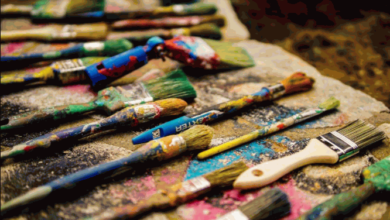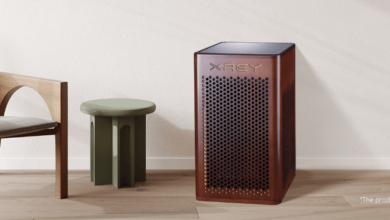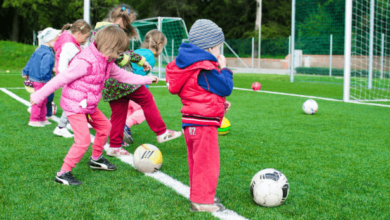Famous Cat Paintings that Look too Realistic
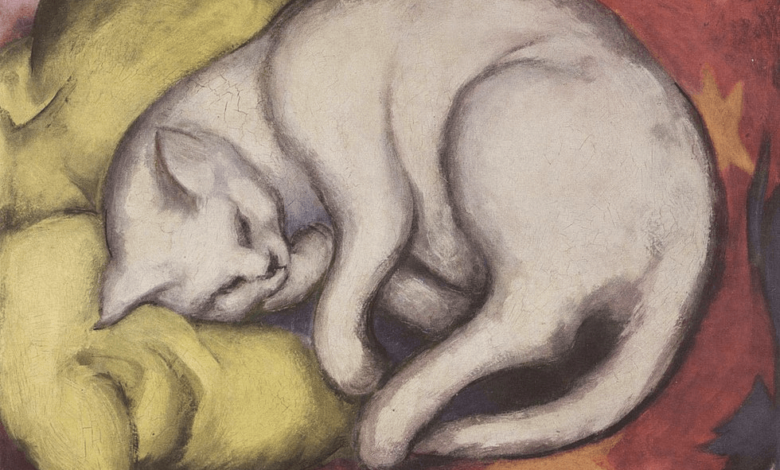
Nowadays, famous cat paintings are seen in almost all art galleries. In fact, cats have been depicted in art for centuries already. Of course, there is famous cat art where cats are the main subjects, but in many other paintings, it seems as if a cat is depicted as “an extra” to convey some or other symbolic message to the viewer.
Some of the cats in the paintings don’t look very realistic. Also, depending on the era when the painting was created, the level of realism differs. But there are many very realistic-looking cats painted by famous artists.
To decide whether a cat painting is “too realistic” is difficult. The best-known artist whose work might be labeled “too realistic” is Haruki Kudo. His paintings are so realistic it looks like photographs. So let’s look at some famous cats in art created by famous painters over the years and determine whether they are “too realistic”.
Hyper-Realistic Artworks of Cats by Haruki Kudo
Every discussion regarding realistically depicted cats has to include the artworks of the Japanese artist Haruki Kudo. It is difficult to believe that his realistic images of cats are not photographs.
His hand-drawn pencil drawings are so well-done and realistic that people, seeing the artworks for the first time, believe they are paintings if they have a closer look at them.
This type of painting is called “hyperrealism,” requiring incredible skill. Completing one of the paintings also takes a lot of work and patience. Haruki Kudo draws all kinds of animals, but his hyper realistic drawings of cats stand out.
Renaissance Paintings of Cats
During the Renaissance, it was the common to use cats in paintings to convey specific messages to the viewer. The symbolic value of a cat in a painting was a given. Art historians believe that although cats have been, to a certain extent, carrying symbolic value and messages in all art periods, the Renaissance period was the period where artists used cat-related symbolism the most.
But despite this symbolic value of cats, the Renaissance painters still depicted cats very realistically. One of the most amous cat paintings “Adam and Eve” by Albrecht Dürer (1471-1528) is a good example. The cat in the engraving has a symbolic message for the viewer but is still depicted very realistically.
It is the same with Domenico Ghirlandaio’s “Last Supper” (1480). It depicts a cat at the feet of the apostle Judas. The cat symbolizes Judas’ treason and evil but is painted realistically. Leonardo da Vinci made many sketches and paintings of cats that looked realistic because he was fond of cats.
Child with Cat (Julie Manet) by Renoir
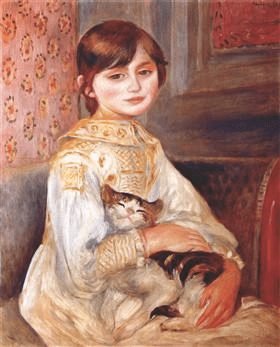
Pierre-Auguste Renoir is famous with the painting named the “Child with Cat. (Julie Manet)”. He painted it in 1887, and it was meant to be a simple portrait of a little girl holding her cat. However, in this painting, the cat has no symbolic value – it is only the child’s cat and looks like a cat.
Renoir was a close friend of the artist Berthe Morisot and her husband, Eugène Manet. They recognized Renoir’s talent, and because they were good friends, Eugene and Berthe asked Renoir to paint a portrait of their daughter Julie. Renoir produced the painting in 1887, and we know it today as “Child with Cat (Julie Manet)”.
Renoir did four or more drawings to prepare for the painting. We do not know whether the cat has been part of all the drawings. What is clear, however, is that he painted the cat just as realistic as he painted Julie.
In other words, it is not as realistic as Kudu’s cat paintings which look like photos. However, it is clearly a painted cat but a realistic depiction.
The White Cat by Franz Marc
The German artist Franz Marc is famous for his colorful paintings of animals. However, as he was definitely one of the leaders of the Expressionist movement with its roots in the Romantic and Symbolist styles, we expect all his animal paintings to portray the emotion evoked by the subject rather than a realistic depiction.
With “The White Cat”, Marc is conveying a message of innocence to the viewer, and he depicts the cat in a typical feline sleeping pose. But apart from all this, the cat looks very realistic. As a whole, “The White Cat” is an uplifting piece. It offers viewers a clear depiction of a cat and a sense of tranquility.
Thus, the cat in this painting conveys to a certain extent a symbolic value but looks like a “normal” sleeping cat.
The Cat’s Lunch by Marguerite Gérard
The cat in this painting is very realistically depicted. It is just how a cat looks when it is given food. Marguerite Gérard’s paintings often illustrate the household’s experiences of motherhood and childhood. She regarded cat companionship as important, as can be seen in this painting.
Some art historians believe that her brother-in-law, Jean-Honoré Fragonard, influenced her to use cats in her paintings, as he was famous for the cats in his paintings. The cat in this painting is very realistic, although it is clearly not photographically as correct as Kudo’s cat paintings.
The Cat at Play by Henriëtte Ronner-Knip
Henriëtte Ronner-Knip was born in Amsterdam and is well known for her paintings of cats and other domestic pets. Pet paintings were famous in the Victorian era, and her paintings of cats getting into mischief were favorites.
Her cat paintings focus only on the cats themselves. She studied her cat subjects and even constructed a specially built glass-fronted studio where her cats could freely walk around, be mischievous, and sleep. The cats in this painting are all very realistically depicted.
Conclusion
Depictions of cats in paintings are as old as art itself. During every period in art history, the popular style of the depiction of cats changed. Over the years, cats were sometimes used for symbolic reasons, sometimes to represent evil, and sometimes in “not-catlike” postures with “human” clothes, etc. Throughout history, there have always been artists painting cats as realistic as possible, but not as realistic as Kudo’s cat paintings.


